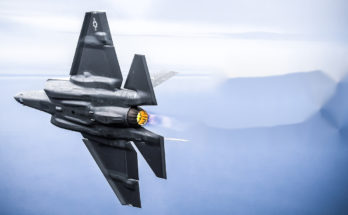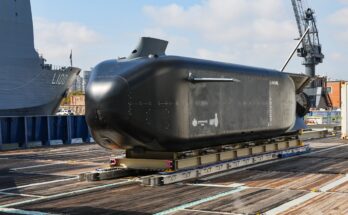by Dan Darling, International Military Markets Analyst, Forecast International.
Taiwan’s ruling cabinet announced on August 17 that it has approved a fiscal year 2018 budget proposal that favors the Ministry of National Defense over all other government departments.
The FY18 budget calls for an allocation of TWD331.8 billion ($10.95 billion) toward defense, which would make this area the largest of all government expenditures at 16.7 percent of the total national budget.
The proposed defense earmark also represents a 3 percent year-on-year nominal increase over the actual 2017 allocation.
On the face of it, the proposed 2018 budget indicates a re-orientation by the center-left government of President Tsai Ing-wen toward defense investment following a period of diplomatic outreach to mainland China as favored by the previous administration of President Ma Ying-jeou.
Ma’s preference for soft power alternatives and closer relations with China rendered the defense budget largely an afterthought. Despite an early 2008 pledge to maintain a defense spending level equal to 3 percent of GDP, by the time he exited office in 2016 the military budget had steadily declined to just 1.9 percent of GDP.
The budgetary volte-face put forth last week comes as the Taiwanese military confronts a host of maladies, most prominent being lowered morale, faltering recruitment drives, and lackluster training.
The 2018 national defense budget proposal features an earmark of TWD154 billion for personnel costs, representing 46 percent of the entire military allocation. The provision of greater funding for personnel – nearly a 5 percent uptick from 2017 – is largely the result of the need to replenish pension reserves, which have suffered from an increasing deficit.
President Tsai Ing-wen made it apparent upon taking office in May 2016 that increases to the defense budget would favor social improvement (hikes in soldiers’ salaries and benefits) in order to entice prospective enlistees by making military service a more attractive career option.
This goal is crucial, as the introduction in Taiwan of volunteer military service in February 2013 has resulted in missed recruitment targets and, in parallel with a reduction in the period of conscripted service, a shrinking military and an increasingly hollow reservist system. Perhaps most notably, morale within the armed forces had reportedly waned during the rule of the previous government, with the result being an increase in the number of Taiwanese military brass successfully recruited by Chinese intelligence agencies for espionage purposes.
Yet while the Tsai government prioritizes personnel investment, the remainder of the defense budgetary pie shrinks. The earmark for capitalization (i.e., equipment purchases, maintenance and upgrades) will fall under the FY18 defense budget from TWD83.7 billion ($2.76 billion) in 2017 to TWD78.8 billion ($2.6 billion) – a 6 percent reduction.
The stagnation in year-on-year capitalization funding hinders critical military-technological innovation and acquisition efforts, as required to counter the improving capabilities of the People’s Liberation Army (PLA).
The prioritization by Tsai Ing-wen’s government of improved livability standards for the military and an improvement in military service overall is, of course, crucial, as the armed forces lack popular support on an island with a long memory of martial law. This period, from 1949 to 1987 – referred to as the “white terror” – involved severe suppression of political dissent and preferential budgetary treatment accorded to the military under the ruling Kuomintang (KMT, or Chinese Nationalist Party).
Nor has the military done much to acquit itself in the public eye in recent years, with multiple internal and external transgressions ranging from the death of a corporal due to forced physical exertion and a warrantless military police raid on an innocent civilian serving to intensify the public backlash against the armed services.
Furthermore, while Ma’s outreach toward China did result in improved relations and a lessening of tensions with Beijing, the flip side was erosion in the public perception of mainland China as a direct strategic threat. Not only do many Taiwanese today view conflict with China as unlikely, they also see expensive military modernization efforts as unnecessarily wasteful and – when compared to the PLA capability and capacity – ultimately ineffectual.
Thus the Tsai administration is battling two different issues on separate – though interconnected – fronts: the first being the need to address the internal military culture by reversing waning morale and eroding discipline, and the second being the need to improve public perception of the armed forces in the hopes of improving recruitment and, in turn, the professionalism of the military.
If successful in these two endeavors, the Taiwanese government will have taken a crucial first step that may eventually allow it the political – and by extension fiscal – breathing room with which to undertake its plans to bolster Taiwan’s local defense industry in the areas of aerospace (both manned and unmanned platforms), shipbuilding (including submarines), and cyber defense and awareness.
Such steps would enable Taiwan to lessen its dependence upon foreign suppliers for the defense hardware and vital technologies required in a global environment where China has, with increasing success, diplomatically isolated the island state.
The defense budget proposal, therefore, appears to represent a first step toward achieving a much broader initiative, that of stanching the internal bleeding of an overstretched and understrength military.
But in order for the military to increase and enhance its combined arms, joint forces and reservist training, and improve its ability to conduct counterintelligence operations against China’s propaganda and its psychological and espionage efforts, even greater funding will be needed. Perhaps at that time, greater investment focus on military modernization and defense industrial innovation will follow.
Please feel free to use this content with Forecast International and analyst attributions, along with a link to the article. Contact Ray Peterson at +1 (203) 426-0800 or via email at ray.peterson@forecast1.com for additional analysis.
The Forecast International International Military Markets series examines the military capabilities, equipment requirements, and force structures inventories of 140 countries, with corresponding coverage of the political and economic trends shaping the defense market outlook for individual countries and regions.
For 50 years, Forecast International intelligence reports have been the aerospace and defense industry standard for accurate research, analysis, and projections. Our experienced analysts compile, evaluate, and present accurate data for decision makers. FI's market research reports offer concise analysis of individual programs and identify market opportunities. Each report includes a program overview, detailed statistics, recent developments and a competitive analysis, culminating in production forecasts spanning 10 or 15 years. Let our market intelligence reports be a key part of reducing uncertainties and mastering your specific market and its growth potential. Find out more at www.forecastinternational.com



